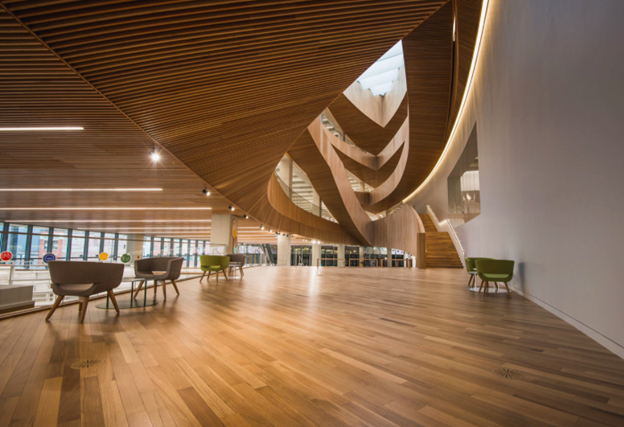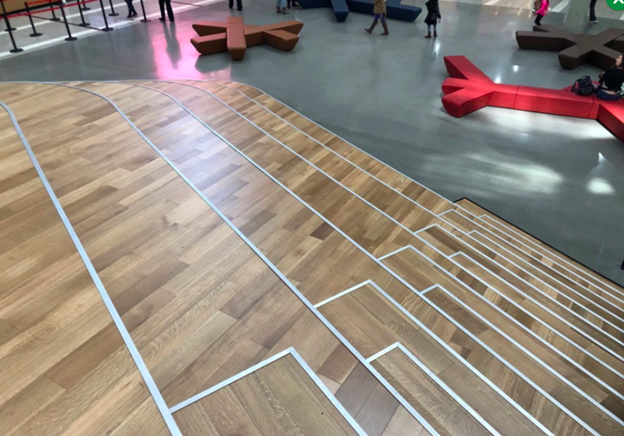
To make school building design successful, you need materials that perform at the top of their class.
Modern education spaces need to meet today’s stricter building standards and should promote the comfort and safety of students, teachers, and visitors. So how can today’s architects design a high performing building that also meets the demand for a healthy learning environment?
Create a Culture of Comfort
Just about everyone loves the look of wood. But in an education setting, natural elements like wood flooring and indoor plants aren’t just stylish — these design choices can benefit students’ wellbeing and help create a better learning experience.
Being around plants and other natural materials like wood can have a calming effect on students and teachers, which makes for a better classroom experience overall.

Wood also offers a hypoallergenic option for flooring, unlike carpeting, which can house dust and other irritants. By incorporating wood elements in school design, architects make the space a healthy and happy place of learning for everyone inside the building.
Many designers include student lounge areas in schools, especially higher education spaces, using expanses of wood throughout the design. This adds an element of organic, cozy appeal for anyone who might need a break or to catch up on work between classes.

Keeping High Traffic Spaces Clean and Safe
Many schools and universities are navigating the stress of students returning to campus during a pandemic. In order to comply with current public safety standards and the needs of incoming students, schools have developed more stringent cleaning practices.
That means the materials used in education design need to not only work with the school’s visual brand but also need to perform at the highest standards. Engineered wood flooring offers architects a solution for durability: Even though wood is a naturally strong material, acrylic-infused wood products offer a harder, longer-lasting floor for high-traffic spaces like schools and universities.
The technology also makes floors easier to sanitize, because the protective finish means it will stand up to frequent cleaning sessions with strong chemicals such as bleach, along with constant foot traffic.
Designing With More Responsible Building Materials
Schools are environments that promote growth and learning. The spaces designers create for students should reflect a commitment to that kind of personal improvement.
Building with responsible materials that promote the longevity and life cycle of the building certainly adds to a space’s appeal, especially with younger generations putting more emphasis on the use of sustainable, eco-friendly materials. After all, if they’re willing to pay more for a product that’s green, would they be more willing to go to a college that’s green, as well?
Choosing products that are locally sourced, environmentally-safe and low-maintenance will help to extend and ensure the life of the building, and also makes the experience of the space more enjoyable for occupants.
“Building construction and operations can have extensive direct and indirect impacts on the environment, on society, and the economy,” according to the Whole Building Design Guide.
Wood is a naturally safe and sustainable material and can be locally sourced. That makes it a great solution for architects who need flooring that can perform to the highest standards without depleting natural resources. That’s a lesson everyone can stand to learn.
Accommodating Design Solutions for Schools
No matter which materials you choose to work with, find solutions that will work now AND over the life of the building. Wood design plays well in interior spaces because it’s such a flexible material to work with. It can give any space a luxurious and traditional ambiance, or by adding cushions or carpets, a space becomes more comfortable and welcoming.

Wood has timeless appeal because it’s extremely versatile, and the material has been used in education, commercial and residential spaces for centuries.
For more ideas and inspiration in your education space, consider using high durability wood, such as acrylic-infused wood, to complete your design. It offers a low-maintenance, durable, stylish solution that students, teachers and school visitors are sure to enjoy, even when class isn’t in session.
About the Contributor
Elizabeth Wood is a territory manager and government sales specialist for Nydree Flooring a small business.
